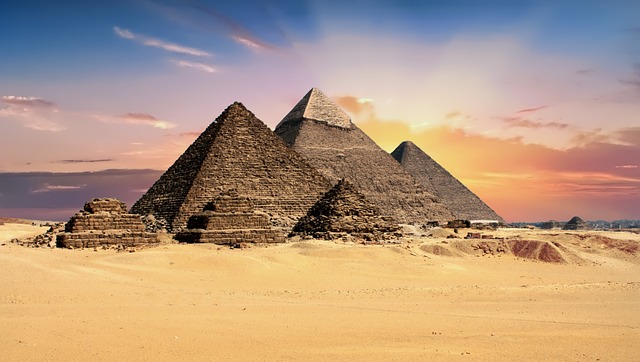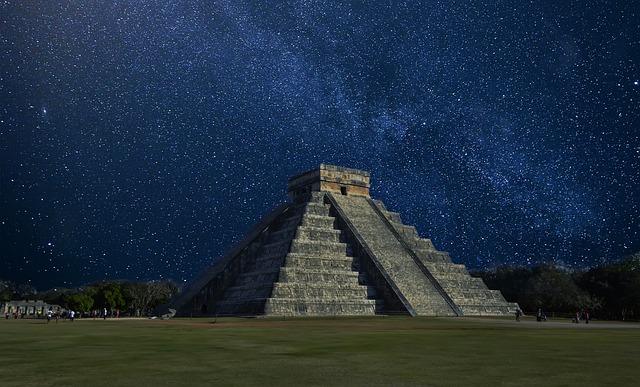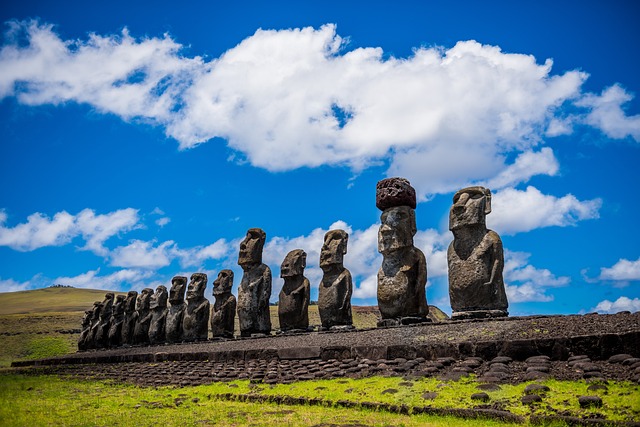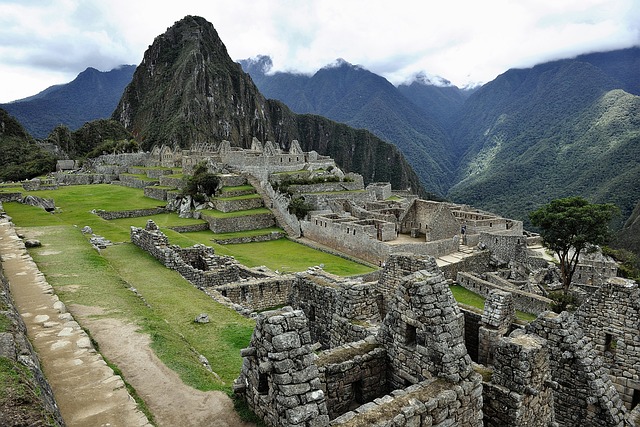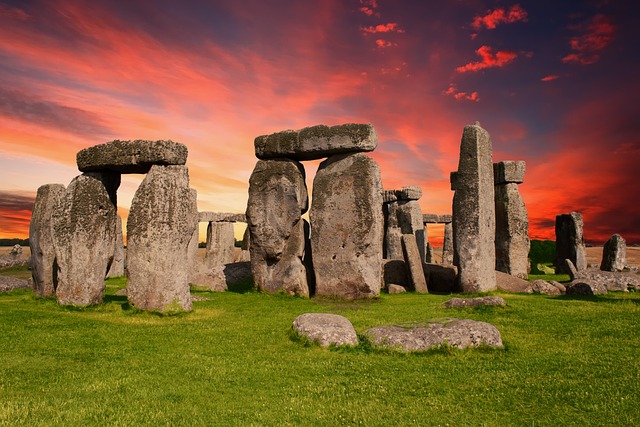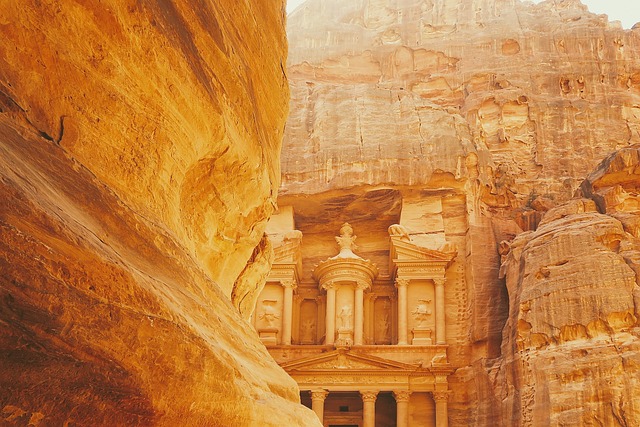Pyramids of Giza, Egypt: Ancient Aliens’ Airbnb or Pharaohs’ Playground?
The Pyramids of Giza, standing tall and majestic on the Giza Plateau near Cairo, Egypt, are monumental marvels that continue to baffle and fascinate people around the globe. These imposing structures, including the renowned Great Pyramid, are timeless testaments to the ingenuity and strength of Ancient Egyptian civilization. They were constructed during a time when Egypt was one of the most powerful and advanced societies in the world.

The pyramids, particularly the Great Pyramid, are centers of countless speculations and conspiracy theories, ranging from alien architects to hidden chambers of vast knowledge. Despite modern advancements in archaeology, the true extent of the mysteries they hold is not fully unraveled. While serving predominantly as grand tombs for pharaohs, the Giza complex is much more than just an ancient burial ground; it’s a symbol of architectural prowess that has stood the test of time.
Key Takeaways
- The Pyramids of Giza are enduring symbols of Ancient Egyptian sophistication and power.
- The inner workings of the pyramids remain shrouded in historical enigma and invite ongoing exploration.
- Today, these ancient wonders beckon travelers worldwide, contributing to their status as iconic tourist attractions.
History and Mystery: Who Built These Triangular Marvels?

While there’s no evidence of alien handiwork, the Pyramids of Giza were built by a sophisticated civilization that knew a thing or two about geometry, astronomy, and heavy lifting.
Architects and Astronomers: Who Were the Pyramid Builders?
Heads up! It wasn’t just any average Joe stacking stones in the desert. The builders were skilled laborers, architects, and astronomers. At the helm was Hemiunu, possibly the most underrated mastermind—and with a title like “Overseer of All Royal Works,” you know he wasn’t just overseeing snack breaks. His resume included the stars since the alignment of the pyramids corresponds with the celestial bodies, showcasing a stargazing hobby that was both practical and pretty divine.
Pharaohs on Fleek: The Kings and Their Eternal Homes
The pharaohs of the 4th Dynasty were like the celebrities of the Old Kingdom era—they wanted to be remembered in style. King Snefru kicked things off with a pyramid-building spree, possibly because he loved a good challenge or he wasn’t impressed with the previous digs. His son, Pharaoh Khufu, took over the business and decided to go big or go home—thus, the Great Pyramid. Their resting places were the equivalent of eternity in the ‘burbs with a celestial view.
The Chronicle of Khufu: The Great Pyramid’s VIP
The original influencer of ancient Egypt, Pharaoh Khufu, had the ultimate flex with his very own pyramid, which, let’s admit, beats any modern-day skyscraper. It’s the largest in Giza, and he probably enjoyed thinking about all the future tourists trying to figure out how it was done. Spoiler: it involved a lot of math, some serious organizational skills, and zero alien consultants.
Engineering Excellence: How Did They Do It?

When it comes to the Great Pyramid of Giza, the ancients definitely knew a thing or two about heavy lifting. From heaving colossal limestone blocks to figuring out the nitty-gritty of pyramid elevation, their construction playbook was nothing short of genius.
Stones on Sledges: Construction Techniques of Yore
They didn’t have cranes, but they sure had muscle and brains. Workers at Giza were like the ancient bodybuilders of the Nile, hauling tremendous stones across the desert. They used sledges—think of them as the Ferraris of the sand, just without wheels or an engine. Oh, and add some ropes and manpower to get those beauties cruising. The stones, sourced from the Tura quarries, were shaped with copper tools — which you might liken to trying to carve a Thanksgiving turkey with a spoon. Yet, they did it with precision that would make a modern engineer’s GPS-laden tools blush with envy.
Leaning on Limestone: Materials That Have Lasted Millennia
The main star of the show was limestone, a real diva rock that demands to be the center of attention. The Great Pyramid of Giza strutted its stuff using a blend of fine white Tura limestone for the casing, with the less-glamorous-but-sturdy local limestone as the inner core. They didn’t skimp on quality, and these materials have outlasted entire civilizations, making one wonder if they had some sort of ancient Amazon Prime for premium building materials.
Ramps and Copper: Ancient Egypt’s Toolbox
You might ask, “How did they get those stone blocks up there? A wing and a prayer?” Close, but add some ramps into the mix. These ramps were the ultimate stairways to heaven for stones, allowing them to reach the dizzying heights needed. And when it came to detailing work, copper chisels and saws were the Swiss Army knives of their day, albeit a tad softer. It’s like performing heart surgery with a butter knife, but for stone — and boy, did these guys have the skills to cut it!
Pyramid Life: Beyond the Burial Chambers

In the land of pharaohs and the ever-gazing Sphinx, the Giza necropolis thrums with more than echoes of the ancient dead. Beyond the quietude of the burial chambers, the plateau is anything but a silent cemetery.
Sphinx and Shindigs: The Giza Plateau Social Scene
The Sphinx, with its lion’s body and pharaoh’s head, is more than just a monumental cat. It’s the ultimate overseer for the celestial parties on the plateau. Scholars might say it kept watch over the complex, but let’s give credit where it’s due: overseeing millennium-spanning soirées where the elite of the afterlife strut their stuff. A stone’s throw away from the grandeur of eternal repose, cupbearers and guests may have mingled on the causeway, handling affairs far livelier than what went on inside the tombs.
Temples and Tombs: What’s a Necropolis Without Them?
Temples in ancient Giza were like the after party venues for the dearly departed. Rituals? Check. Lavish offerings to the gods? Double-check. All these happened on sacred ground that made the local necropolis the place to be for an eternal festivity. Funerary temples and valley temples were connected by a causeway, which might as well have been the red carpet leading to the last home of the pharaohs—their eternal resting tombs.
Serving the King in the Afterlife: The Role of Mastabas
Mastabas scattered around the plateau were the ancient equivalent of VIP lounges for the king’s entourage. Housing the spirits of officials, family, and nobles, they ensured that the Giza necropolis was staffed for the afterlife. Conveniently situated, they provided an eternal service to their king from the afterlife, being all, “Fear not, great pharaoh, for we are here to keep the party going for eternity—or at least until the archaeologists show up!”
Tourist Traps and Tales: Giza in Modern Times

The Great Pyramids of Giza have become far more than ancient monuments. Today, they’re a backdrop for a bustling blend of commerce and ongoing scholarly pursuits, often with a humorous twist.
Gift Shops and Selfie Sticks: The Commercialization of Antiquity
Amidst the timeless grandeur of the Giza plateau, one finds the not-so-ancient swarm of vendors hustling everything from sun hats to miniature sphinxes. Visitors eager to commemorate their journey to one of the Seven Wonders of the Ancient World can easily swap their cash for questionably authentic artifacts. The area has become a hotspot for those wielding selfie sticks, often stretching out in front of the majestic structures while deftly avoiding the local sales pitch.
| Item | Price Range (Approx.) | Quirky Factor |
|---|---|---|
| Pyramid snowglobe | $5 – $10 | Ironic, considering the desert climate |
| Sphinx fridge magnet | $2 – $5 | Stick your shopping list on your fridge with a bit of history |
| Papyrus scrolls | $10 – $20 | Scrolls down, prices up! |
Scholars and Scandals: The Archaeologists Who Dig It
In contrast to the commercial frenzy, diligent archaeologists continue to dig up new chapters of the ancient past, occasionally unveiling scandals along with relics. One day they’re deciphering hieroglyphics, the next they’re dodging conspiracy theories faster than you can say “mummy’s curse.” These researchers often operate in the shadows of the looming Great Pyramid, a UNESCO World Heritage Site, painstakingly piecing together history with each brushstroke. It’s no walk along the Nile, especially when an ill-placed step can lead to headlines of “Archaeologist Stumbles Upon 4,000-Year-Old Pottery Shop.”
Visitors might speculate that with the Grand Egyptian Museum in Cairo nearing completion, there’ll be even more tales to excavate in this cross-section between the academic and the absurd. In Giza, one can be sure that these juxtapositions are as complex as a pharaoh’s tomb and twice as entertaining to unravel.

